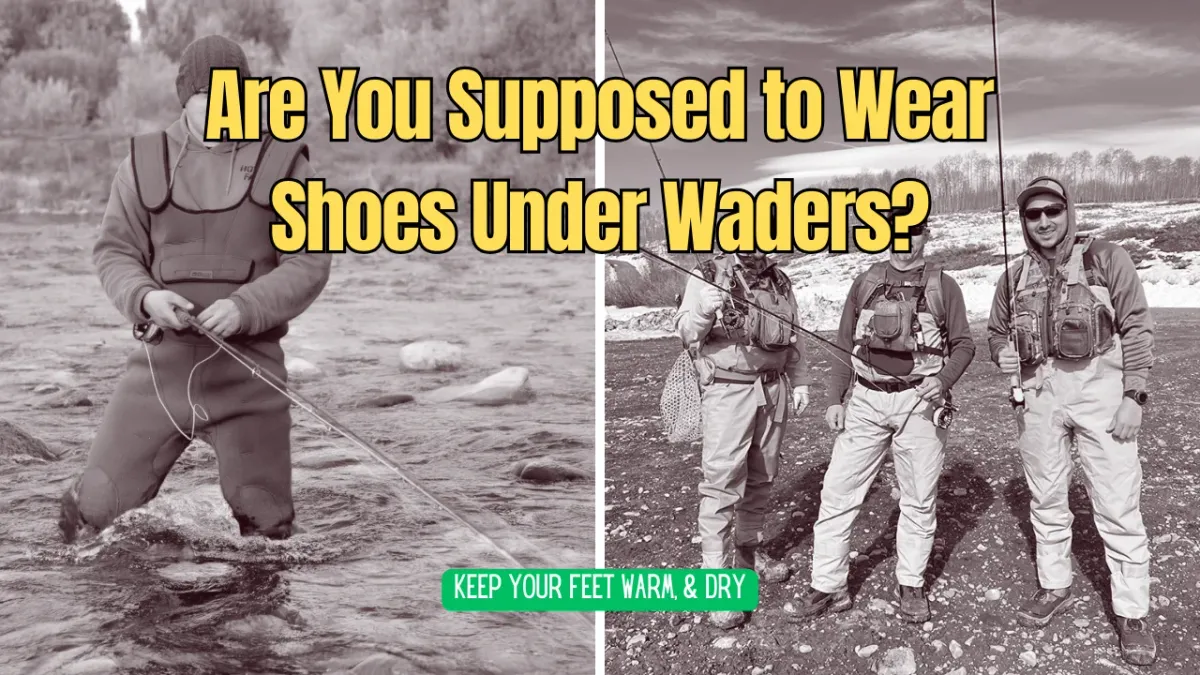If you've ever ventured into the world of fly fishing, you've likely encountered the question: "Do your feet get wet in stocking waders?" This is a common concern for both novice and experienced anglers. Stocking waders are always thought of as one the best picks for fishing waders, but their effectiveness in keeping your feet dry can depend on several factors. Let's dive into the nitty-gritty of stocking waders and how to ensure your feet stay warm and dry.
Key Takeaways:
- Stocking waders are designed to keep your feet dry, but proper usage and complementary gear are essential.
- Wearing the right socks and wading boots can significantly enhance your comfort and warmth.
- Understanding the materials and fit of your waders can prevent cold feet and improve your fishing experience.
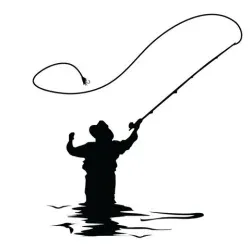
What Are Stocking Waders?
Stocking waders, also known as stockingfoot waders, are a type of fishing gear that covers your legs and feet. Unlike bootfoot waders, which have boots attached, stocking waders end in a sock-like foot covering. This design allows for more flexibility and a better fit with wading boots. However, it also raises questions about whether your feet will stay dry.
The sock portion of stocking waders is typically made from neoprene, a material known for its waterproof and insulating properties. When paired with the right wading boots, stocking waders can provide excellent protection against cold water. However, the effectiveness of this combination depends on several factors, including the fit of your waders and the type of socks you wear.
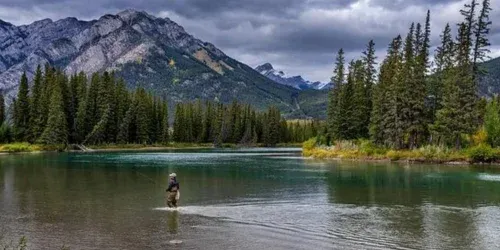
The Importance of Proper Fit
One of the most critical aspects of keeping your feet dry in stocking waders is ensuring they fit correctly. Ill-fitting waders can lead to gaps and leaks, allowing water to seep in. When choosing stocking waders, it's essential to consider both the size of the waders and the size of your wading boots. Many anglers recommend going half a size bigger in wading boots to accommodate the extra bulk of the neoprene foot.
A well-fitting pair of stocking waders should be snug but not too tight. You want enough wiggle room to move comfortably without creating gaps where water can enter. Additionally, make sure the seams are well-sealed to prevent leaks. High-quality waders from well-known brands often come with reinforced seams to provide extra protection against water ingress.
The Role of Socks
Wearing the right socks is crucial for keeping your feet dry and warm in stocking waders. Wool socks are a popular choice among anglers because they provide excellent insulation and wick moisture away from your skin. Neoprene socks can also be worn for added warmth and waterproofing. Some anglers prefer to wear a thin wicking liner sock underneath their wool or neoprene socks to further enhance moisture management.
It's essential to avoid cotton socks when wearing stocking waders. Cotton retains moisture, which can lead to cold, wet feet. Instead, opt for materials that wick moisture away from your skin and provide insulation. Wearing one pair of high-quality socks is usually sufficient, but in extremely cold conditions, you might consider layering with a second pair.
Wading Boots and Ankle Support
Wading boots play a significant role in keeping your feet dry and comfortable in stocking waders. These boots are specifically designed to be worn with stockingfoot waders and provide the necessary ankle support and traction for navigating slippery riverbeds. When choosing wading boots, look for features like reinforced toe caps and sturdy soles to protect your feet from sharp rocks and other hazards.
It's also essential to ensure your wading boots fit well with your stocking waders. As mentioned earlier, going half a size bigger can provide the extra room needed for thicker socks and the neoprene foot of the waders. A snug fit will help prevent water from entering your boots and keep your feet dry.
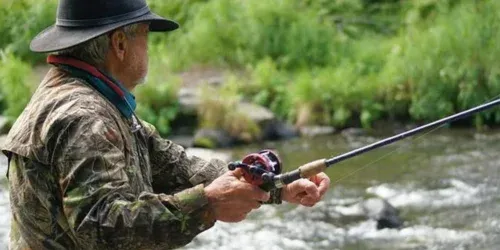
Neoprene Booties and Wet Wading
In warmer weather, some anglers prefer to wet wade, which involves wading directly in the water without waders. Neoprene booties are a popular choice for wet wading because they provide some insulation and protection for your feet. These booties can be worn with wading shoes or sandals to provide traction and support.
While wet wading can be refreshing in hot weather, it's essential to be mindful of the water temperature. Even in summer, mountain streams can be quite cold, and prolonged exposure to cold water can lead to discomfort or even hypothermia. Wearing neoprene booties can help keep your feet warm and protected while wet wading.
Keeping Your Feet Warm in Cold Water
Fishing in cold water presents unique challenges, and keeping your feet warm is crucial for a comfortable experience. In addition to wearing wool or neoprene socks, you can use battery-powered socks for added warmth. These socks have built-in heating elements that provide consistent warmth, making them an excellent choice for winter fishing.
Another tip for staying warm is to keep your core temperature up. Wearing layers of clothing and using hand warmers can help maintain your overall body heat, which in turn helps keep your feet warm. It's also essential to avoid standing still for long periods. Moving around helps improve circulation and keeps your feet from getting too cold.
The Impact of Moisture Management
Moisture management is a critical factor in keeping your feet dry and comfortable in stocking waders. Even if your waders are waterproof, sweat can accumulate inside, leading to damp, uncomfortable feet. Wearing moisture-wicking socks can help manage this issue by drawing sweat away from your skin and allowing it to evaporate.
In addition to wearing the right socks, it's essential to air out your waders and boots after each use. This helps prevent the buildup of moisture and reduces the risk of mold and mildew. Some anglers also use moisture-absorbing inserts in their boots to keep them dry between fishing trips.
Choosing the Right Waders for Your Needs
When selecting stocking waders, it's essential to consider the type of fishing you'll be doing and the conditions you'll be facing. For example, if you primarily fish in cold water, neoprene waders might be the best choice because of their insulating properties. On the other hand, if you fish in warmer weather, breathable waders made from lightweight materials might be more comfortable.
It's also essential to consider the durability and features of the waders. Look for waders with reinforced knees and seams, as these areas are prone to wear and tear. Some waders also come with built-in gravel guards to prevent debris from entering your boots. Investing in high-quality waders can make a significant difference in your comfort and performance on the water.
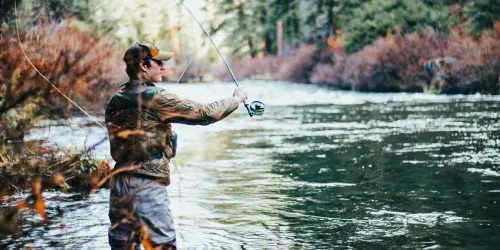
The Benefits of Layering
Layering is a crucial strategy for staying warm and dry in stocking waders. Start with a moisture-wicking base layer to manage sweat, followed by an insulating layer like fleece or wool to retain heat. Finally, your waders serve as the outer layer, providing waterproof protection.
In extremely cold conditions, you might consider adding an additional insulating layer or using heated clothing. The key is to find a balance between warmth and mobility. Too many layers can restrict your movement, making it difficult to fish effectively. Experiment with different combinations to find what works best for you.
The Role of Wading Shoes
Wading shoes are another essential component of your fishing gear. These shoes are designed to be worn with stockingfoot waders and provide the necessary traction and support for navigating slippery riverbeds. Look for wading shoes with non-slip soles and sturdy construction to protect your feet from sharp rocks and other hazards.
It's also essential to ensure your wading shoes fit well with your stocking waders. As mentioned earlier, going half a size bigger can provide the extra room needed for thicker socks and the neoprene foot of the waders. A snug fit will help prevent water from entering your shoes and keep your feet dry.
The Importance of Ankle Support
Ankle support is crucial when wading in rivers and streams. The uneven terrain and slippery rocks can put a lot of strain on your ankles, making it essential to have proper support. Wading boots with built-in ankle support can help prevent injuries and provide the stability you need to navigate challenging conditions.
In addition to wearing supportive boots, it's essential to be mindful of your footing. Take your time when wading and use a wading staff if necessary to maintain your balance. Proper technique and equipment can go a long way in preventing accidents and ensuring a safe and enjoyable fishing experience.
The Role of Neoprene Waders
Neoprene waders are a popular choice for cold-weather fishing because of their excellent insulating properties. These waders are made from thick neoprene material that provides both warmth and waterproof protection. While neoprene waders can be bulkier than other types, their ability to keep you warm in cold water makes them a favorite among winter anglers.
When wearing neoprene waders, it's essential to pair them with the right socks and boots. Wool or neoprene socks can provide additional insulation, while well-fitting wading boots can help prevent water from entering your waders. The combination of neoprene waders and proper footwear can keep you warm and dry even in the coldest conditions.
The Benefits of Wearing Wool
Wool is a fantastic material for fishing socks because of its natural insulating and moisture-wicking properties. Unlike cotton, wool can retain warmth even when wet, making it an excellent choice for cold-weather fishing. Wool socks can be worn alone or layered with a thin wicking liner sock for added comfort.
In addition to keeping your feet warm, wool socks can help prevent blisters and chafing. The soft, cushioned material provides a comfortable fit and reduces friction inside your boots. Investing in high-quality wool socks can make a significant difference in your overall comfort and performance on the water.
The Role of Battery-Powered Socks
Battery-powered socks are a game-changer for anglers who fish in extremely cold conditions. These socks have built-in heating elements that provide consistent warmth, making them an excellent choice for winter fishing. Battery-powered socks can be worn alone or layered with other socks for added insulation.
When using battery-powered socks, it's essential to follow the manufacturer's instructions and ensure the batteries are fully charged before your fishing trip. Some models come with adjustable heat settings, allowing you to customize the level of warmth to your preference. Battery-powered socks can help keep your feet warm and comfortable, even in the coldest conditions.
The Impact of Cold Feet on Fishing Performance
Cold feet can significantly impact your fishing performance and overall enjoyment. When your feet are cold, it can be challenging to focus on fishing, and you may be tempted to cut your trip short. Keeping your feet warm and dry is essential for maintaining comfort and concentration on the water.
In addition to wearing the right gear, it's essential to take breaks and warm up if you start to feel cold. Moving around and wiggling your toes can help improve circulation and keep your feet from getting too cold. Staying warm and comfortable can make a significant difference in your fishing experience and overall success.
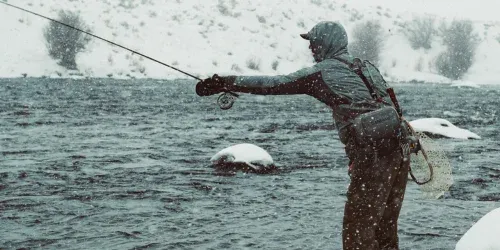
The Role of Wicking Liner Socks
Wicking liner socks are a valuable addition to your fishing gear, especially when wearing stocking waders. These thin socks are designed to be worn underneath your primary socks and help manage moisture by drawing sweat away from your skin. Wicking liner socks can be made from various materials, including synthetic fibers and merino wool.
By wearing wicking liner socks, you can enhance the moisture management properties of your primary socks and reduce the risk of damp, uncomfortable feet. These socks are particularly useful in warm weather or during intense physical activity when sweat can accumulate inside your waders. Adding a pair of wicking liner socks to your fishing gear can help keep your feet dry and comfortable.
The Benefits of Wearing Neoprene Booties
Neoprene booties are a versatile piece of fishing gear that can be worn with wading shoes or sandals. These booties provide insulation and protection for your feet, making them an excellent choice for wet wading or fishing in cold water. Neoprene booties are made from the same material as neoprene waders, offering similar waterproof and insulating properties.
When wearing neoprene booties, it's essential to ensure they fit well and provide adequate support. Some anglers prefer to wear a thin pair of socks underneath their booties for added comfort and moisture management. Neoprene booties can help keep your feet warm and protected, whether you're wet wading or wearing them with wading shoes.
The Role of Wading Shoes in Cold Water
Wading shoes are an essential component of your fishing gear, especially when fishing in cold water. These shoes provide the necessary traction and support for navigating slippery riverbeds and protecting your feet from sharp rocks and other hazards. When choosing wading shoes, look for features like non-slip soles and reinforced toe caps.
In addition to providing protection, wading shoes can help keep your feet warm by preventing water from entering your boots. A snug fit is essential to ensure your wading shoes work effectively with your stocking waders. By investing in high-quality wading shoes, you can enhance your comfort and performance on the water.
The Importance of Keeping Your Feet Dry
Keeping your feet dry is crucial for maintaining comfort and preventing cold-related issues like frostbite. Even if your waders are waterproof, sweat can accumulate inside, leading to damp, uncomfortable feet. Wearing moisture-wicking socks and airing out your waders and boots after each use can help manage moisture and keep your feet dry.
In addition to wearing the right gear, it's essential to be mindful of your environment and avoid standing in deep water for extended periods. Taking breaks and moving around can help improve circulation and keep your feet from getting too cold. By taking proactive steps to keep your feet dry, you can enhance your overall fishing experience.
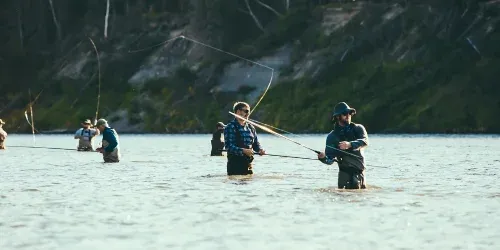
Summary
Stocking waders are a valuable piece of fishing gear that can keep your feet dry and comfortable when used correctly. Ensuring a proper fit, wearing the right socks, and choosing high-quality wading boots are essential steps in achieving this goal. By understanding the materials and features of your waders and taking proactive measures to manage moisture and warmth, you can enjoy a more comfortable and successful fishing experience.

FAQs
Do your feet get wet in stocking waders?
No, your feet should not get wet in stocking waders if they are properly fitted and paired with the right wading boots and socks. Ensuring the seams are well-sealed and wearing moisture-wicking socks can help keep your feet dry.
What type of socks should I wear with stocking waders?
Wool or neoprene socks are ideal for wearing with stocking waders. These materials provide excellent insulation and moisture-wicking properties. Avoid cotton socks, as they retain moisture and can lead to cold, wet feet.
How can I keep my feet warm in cold water?
To keep your feet warm in cold water, wear insulating socks like wool or neoprene, and consider using battery-powered socks for added warmth. Layering your clothing and keeping your core temperature up can also help maintain overall body heat and keep your feet warm.
Related articles:
